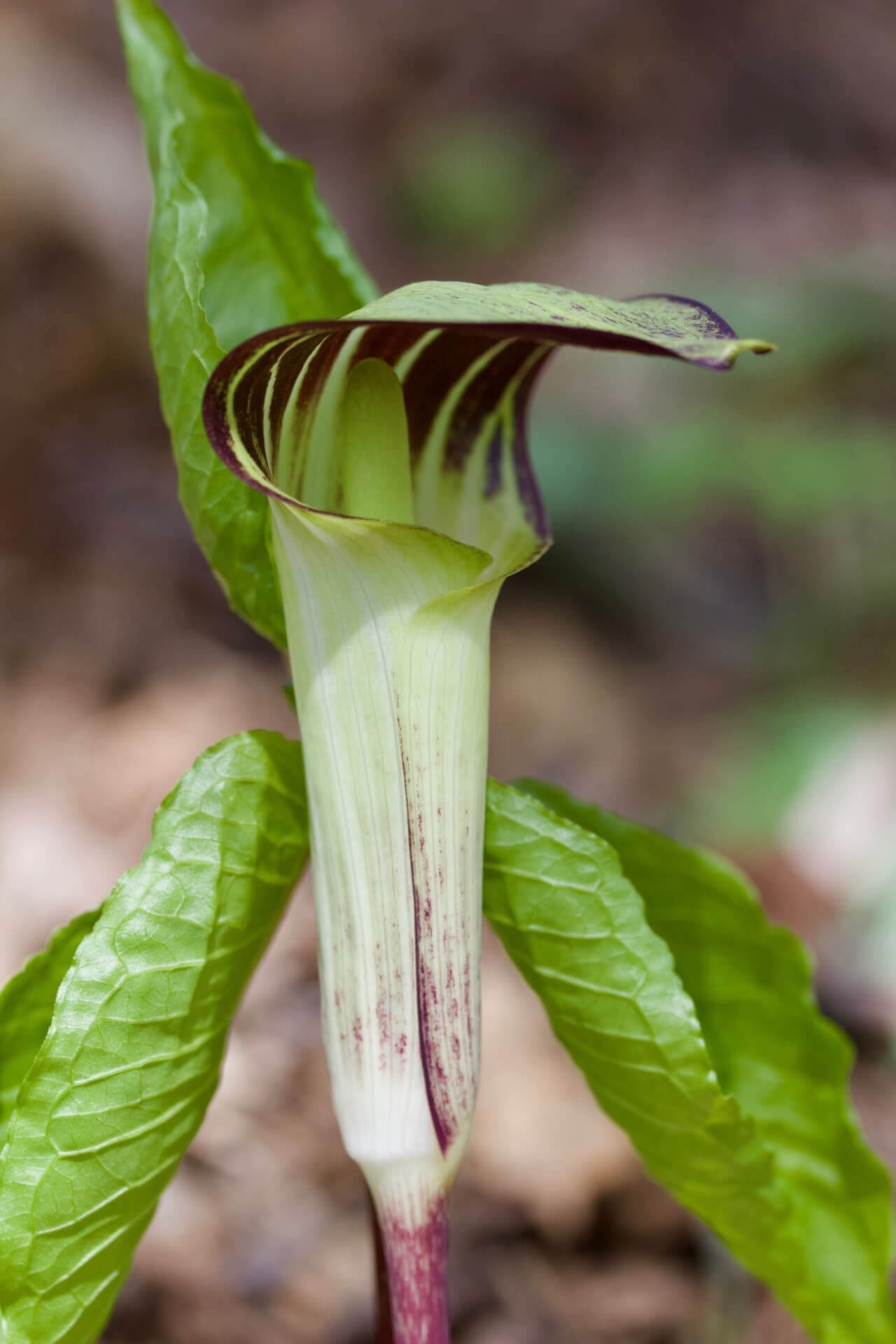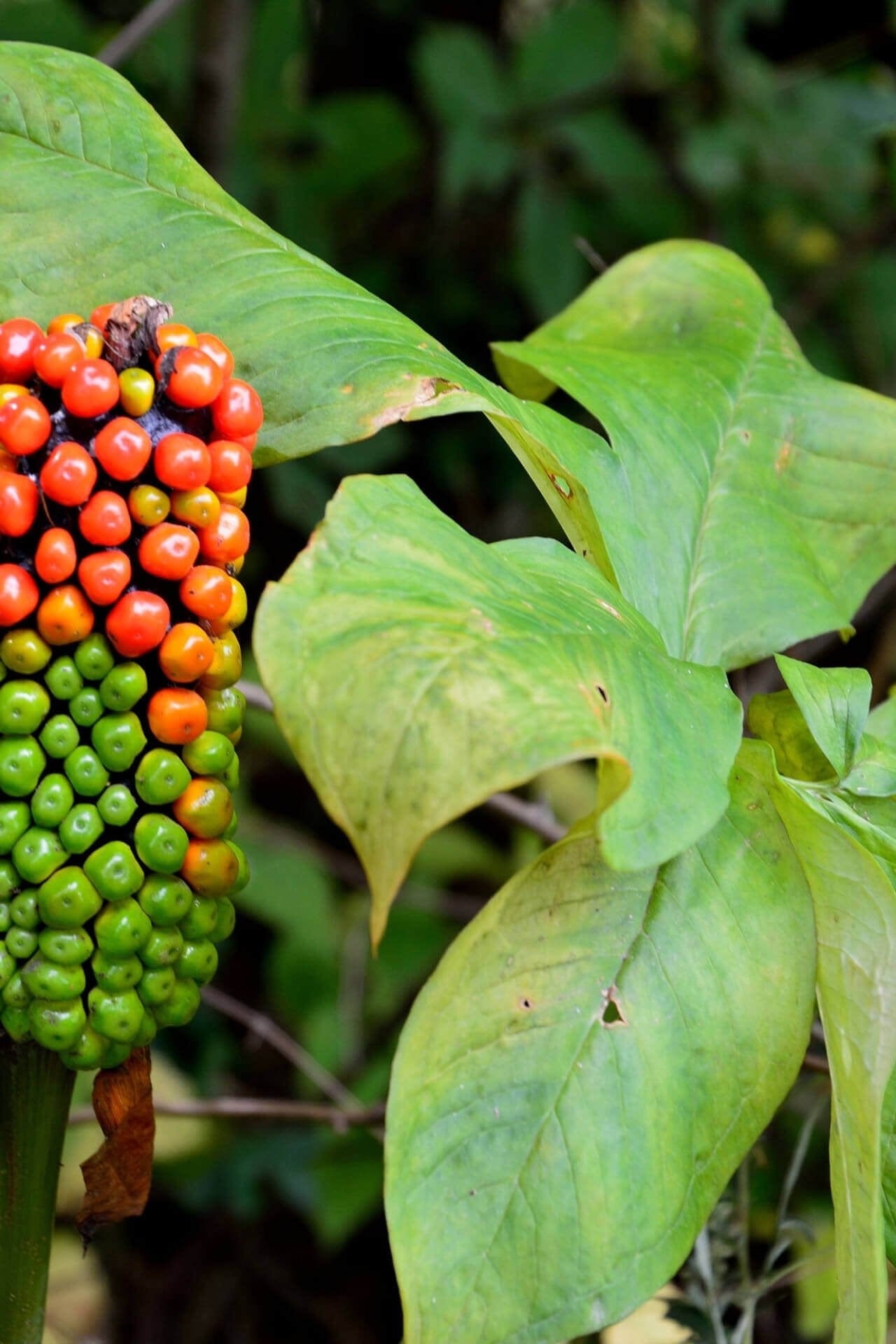Jack In The Pulpit
Jack In The Pulpit
| Order | Percentage Discount | ||
|---|---|---|---|
| 2-5 | 25% Off | ||
| 6-10 | 30% Off | ||
| 11-25 | 35% Off | ||
| 26-50 | 45% Off | ||
| 51+ | 65% Off | ||
Couldn't load pickup availability
Jack In The Pulpit - Arisaema Triphyllum
Jack in the pulpit is a glamorous plant species in the Araceae family. It is native to North America and can be found in the eastern region of the continent, from Canada to the southern part of the United States. The plant is also known by its scientific name, Arisaema triphyllum.
Physical Characteristics
It is a perennial herbaceous plant that grows up to 2 feet tall. The plant has a unique structure that makes it easy to identify. The plant has a green spathe that covers a spadix, which is a cylindrical structure that is covered with tiny flowers. The spathe is hood-shaped with a long, pointed tip that arches over the spadix. The spadix is covered with small, greenish-yellow flowers that bloom in the spring.
Jack In The Pulpit Lifecycle
It has a fascinating life cycle. The plant is a perennial, meaning it can live for many years. The plant grows from a corm, a bulb-like structure containing the plant's nutrients. In the spring, the plant produces a single leaf divided into three parts. The leaf can grow up to 15 inches long and has a unique shape that makes it easy to identify.
Plant Uses
Native American tribes have used it for medicinal and culinary purposes for centuries. The plant contains calcium oxalate, which can cause severe irritation if ingested. However, it can treat colds, sore throats, and respiratory problems when correctly prepared. The roots of the plant have also been used as a natural insecticide.
Cultivation
This plant can be cultivated in a garden but requires specific growing conditions. The plant prefers moist, shady areas with well-drained soil. The corms should be planted in the fall, and the plant will begin to grow in the spring. To thrive, the plant requires regular watering and fertilization.
It is a unique plant with many interesting characteristics. From its distinctive structure to its fascinating life cycle, this plant is a true marvel of nature. While it may not suit everyone's garden, it is undoubtedly a plant worth learning about. Whether you are interested in its medicinal uses or want to appreciate its beauty, it will capture your attention.
It is an herbaceous perennial plant known as the Indian Turnip, Brown Dragon, bog onion, Wild Turnip, and American Wake Robin. It gets its name from the shape of the blossoms, which have a cuplike hooded top showing off various colors, from cream to green and burgundy to brown.
The hood or spathe showcases a spike or spadix that could be mistaken for a man standing in the pulpit. It is covered with tiny male and female flowers of various colors: white, red, pink, and green. The hood is framed by basal leaves in sets of three.
It is native to the Midwest and grows hardily in zones 2-7. It thrives in soils that are damp and acidic. It also likes rich humus forest soils. This is an excellent plant for extremely boggy areas of your garden or lawn.
The plant grows 6 inches to 3 feet in total. It grows well in partial and full shade. From mid to late summer, the plant produces red berries in a clustered cone that takes the place of the spike.
Eventually, the hood dies, and the berries are displayed in full, rich glory. It grows wildly in rich, moist woods from New Brunswick, Canada, to Florida. This plant is an exceptional addition to bog or rain gardens and tolerates poorly drained soils. Grow them from the berries' seeds planted in the fall in 6 inches of slightly acidic soil with lots of organic matter.
These make an excellent addition to shade gardens and outliners around the edges of woodlands. It is easy to grow and care for as a plant.
This plant's blooms appear in mid-to-late spring, covering the spadix. By the end of the summer, the spadix disappears, and the cluster of green, then ripe red berries appears, so for months, your garden is decorated with color.
This Is How Your Plants Will Look upon Delivery
Shipping date depends on the date displayed and chosen when you order from the product's page.
We only accept returns on plants verified dead. If you think your plants have died, we offer a 1 year warranty, please use use this File a Claim Link to verify dead plants and start with return warranty process.




